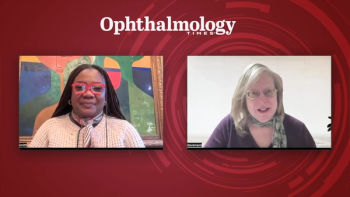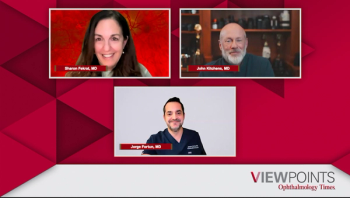
S. Robert Levine, MD, on the DRD Cure Accelerator: A global moonshot for retinal disease

The DRD Cure Accelerator, highlighted at the CCOI-Stanford Summit, is a global initiative advancing clinical research and collaborations to eliminate vision loss from diabetic retinal disease.
S. Robert Levine, founder and CEO of the Mary Tyler Moore Vision Initiative, highlighted the efforts for addressing diabetic retinal disease (DRD) through the DRD Cure Accelerator in a presentation at the Collaborative Community on Ophthalmic Innovation (CCOI)-Stanford Summit: Shaping the Future of Ophthalmic Innovation, held July 23, 2025, in Palo Alto, California.
The DRD Cure Accelerator, an extension of the Mary Tyler Moore Vision Initiative, is what Levine calls “mission-driven science,” with the clear objective to “create a world without vision loss from diabetes.” Despite decades of advocacy and billions raised—much of it through the efforts of his late wife, Mary Tyler Moore—Levine notes, “she suffered deeply from its complications, including vision loss.” He sees this work as fulfilling her unfinished mission.
He clarified that what’s traditionally referred to as diabetic retinopathy is more accurately a disease of the entire retinal neurovascular unit, encompassing not only microvascular damage but also macular edema and neurodegeneration. “That’s why we call it DRD,” he said, noting its rising prevalence, including among young adults—with nearly 50% of youth-onset diabetes patients showing signs of DRD by age 26.
A central challenge, Levine noted, is that current risk stratification and clinical trial endpoints are “outmoded and insensitive.” The DRD Cure Accelerator, aligned with the Mary Tyler Moore Vision Initiative, aims to modernize this landscape by validating objective surrogate markers and clinical endpoints to support accelerated product development and precision treatment.
He detailed upcoming initiatives, including 2 observational clinical studies in partnership with the DRCR Retina Network focused on functional vision measures like contrast sensitivity and ERG. These will complement work in the 2,500-subject French EVIRED study and a forthcoming patient-reported outcome measure, all contributing to a shared global framework.
“It's not just the science at the bench,” he stated, “it's translation, commercialization, regulatory approval, and adoption.” The DRD Cure Accelerator, in his words, is “an invitation to join us,” aimed at catalyzing international collaboration. “Only together,” Levine concluded, “are we going to solve this problem.”
Newsletter
Don’t miss out—get Ophthalmology Times updates on the latest clinical advancements and expert interviews, straight to your inbox.




